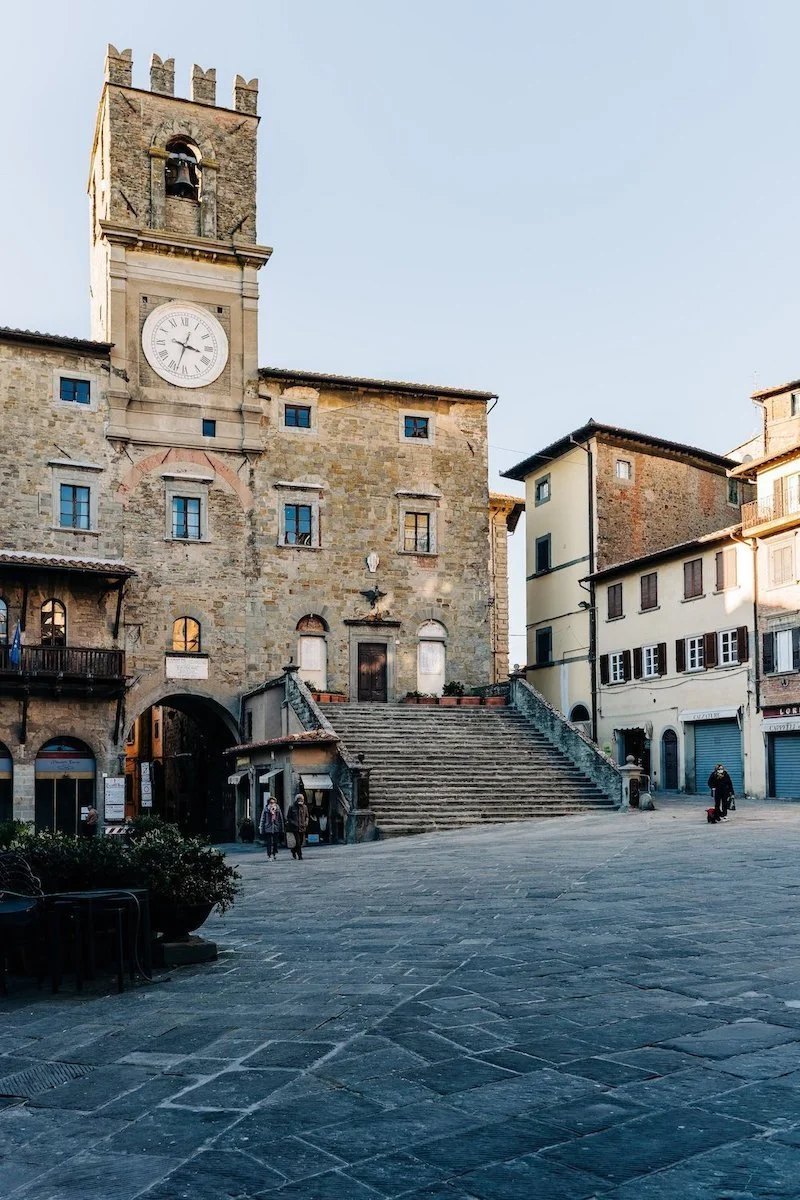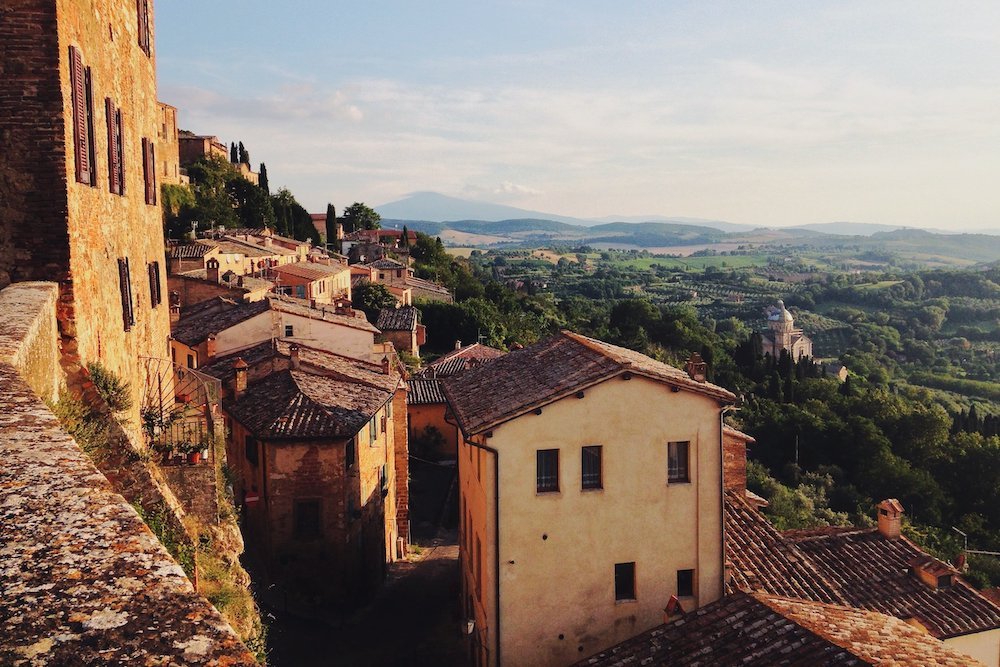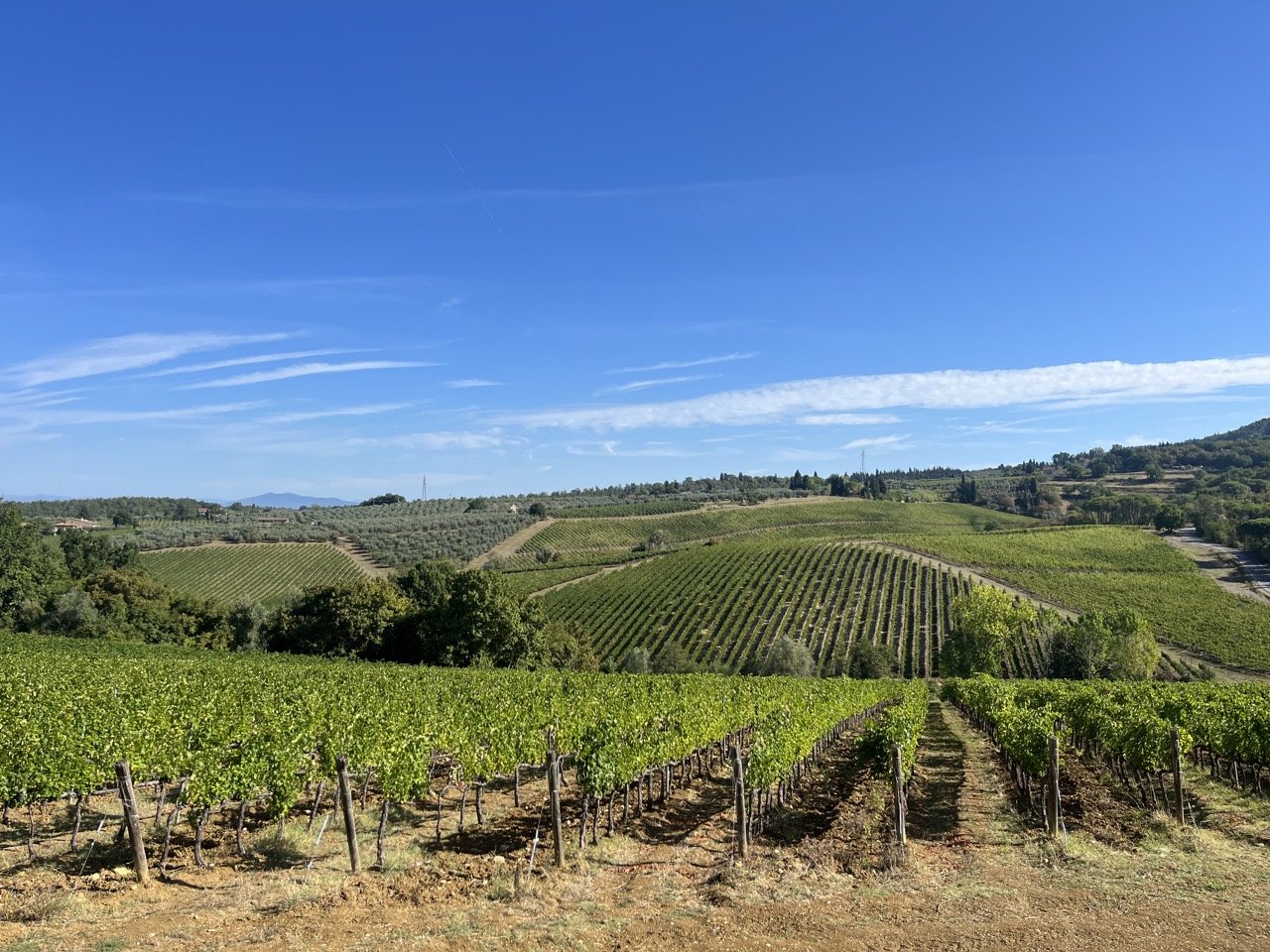Rome to Tuscany: 5 Tuscan Towns to Visit from Rome
Affiliate disclosure: some of the links in this article are affiliate links. If you book using one of them, we’ll earn a small commission. All of our info is free to read and free of ads, so we appreciate it!
Rome is most visitors’ first stop on their Italy trips, and with good reason! The Eternal City has enough sights and wonders to keep any visitor entertained for days or even weeks, and we always recommend at least 3 days in the city to soak it all in.
But Tuscany, one of Italy’s most beautiful regions, almost always still beckons! Filled with endless things to see and do, the region boasts everything from beautiful beaches and hill-top medieval cities to Alpine mountains and verdant rolling hills filled with vineyards. The cities of Florence, Pisa, and Lucca are always a delight while the unique landscapes of the Val d’Orcia offer quintessential Tuscan splendor and the Chianti region boasts some of Italy’s best wine and most beautiful wineries.
So, whether you’re just considering a day trip to Tuscany from Rome or planning on an extended tour of the region, we’ve put together detailed instructions for how to get to 5 charming Tuscan towns and cities from Rome.
Table of Contents


Things to know before visiting Tuscany from Rome
Before we get into the specifics, there are a few important things to be aware of when planning travel between Rome and Tuscany.
First and foremost, it’s important to know that Tuscany is a region. It lies to the north of the region of Lazio (where Rome is located) and its capital city is Florence. Florence, therefore, is a part of Tuscany. So instead of asking “how to get from Rome to Tuscany” you should first consider where in Tuscany you want to go and then try to figure out how to get there.
The easiest way to get from Rome to Tuscany is to take a high-speed Frecciarossa train from Rome to Florence. The trains depart almost every 15 minutes, beginning at 5:00 am in the morning and continuing until around 10:30 in the evening. The journey takes 1.5 hours and tickets usually cost 20-30 euros, one way. From Florence, you then have many options (bus, train, or car) to get to other parts of Tuscany.
That said, depending on where you’re going in Tuscany, it may be more convenient to take a slower Regionale or Regionale Veloce train, as these trains make many stops at different cities along the route, whereas the high-speed trains are direct (non-stop) from Rome to Florence.
Tuscany is a large region
First, Tuscany is a large region and many of its main attractions are quite spread out. This means that the transportation options between cities and towns are not always very convenient, so unless you have a car, trying to combine multiple locations into one day of touring can be quite difficult.
For a day trip from Rome, you will only be able to visit one town or city in Tuscany
If you’re planning on using public transport for a day trip from Rome to anywhere in Tuscany, know that you will really only be able to reasonably visit one town or city. There are also many cities and towns in Tuscany that are simply unreachable as day trips.
High-speed trains only run between Rome and Florence
Although Italy has an excellent train system, many direct routes and high-speed trains only run between major cities. So, while you can get between Rome and Florence in just about 1.5 hours, reaching smaller towns and cities will often take much longer. To reach them, you’ll have to take slow regional trains or first go to Florence and then catch a local train or bus onward to your final destination.
In general, if you plan on taking public transportation from Rome to somewhere in Tuscany other than Florence, you should expect to spend around 3 hours in transit each way.
It’s always best to book your trains directly with Trenitalia or Italo, but if you want to compare options from both companies, the aggregator website Omio is really easy to use and has a good interface.
You need a car to get into the Tuscan countryside
If you’re interested in getting out into the countryside, visiting natural areas, or enjoying some wine tasting, you will likely find that public transportation is simply not an option at all. Much of Tuscany is rural, and the countryside and wineries that the region are famed for are not in big cities or towns.
As such, you will absolutely need your own car or to hire a driver if you want to get to some of these less accessible locations.
If you plan on renting a car, I also always recommend checking prices on DiscoverCars. It’s an online aggregator that includes offerings from all the major international rental companies as well as lots of smaller local agencies, which often have much better pricing.
AutoEurope is another aggregator that I really like. It tends to be more expensive, but they only list options from large, well-reviewed companies and their customer service is excellent. Their deals often include “zero deductible” rental insurance and they’re the best option if want the easiest experience and are ok paying a little more for it.
Getting from Rome to Florence
Florence is undoubtedly the star attraction in Tuscany and it’s also by far the easiest city in the region to get to from Rome. Taking the train is your best bet as Trenitalia’s high-speed Frecciarossa trains make the journey between Rome and Florence in as little as 1 hour and 40 mintues. The train leaves from Rome’s main station, Roma Termini, and makes one stop at Roma Tiburtina before heading directly for Florence.
Many people spend multiple days exploring Florence, so once you arrive you should plan on dedicating at least an entire day to exploring the city. Keep in mind that Florence is one of Italy’s most visited cities, so you need to book tickets for attractions and museums well in advance.
If you want really detailed specifics on getting between Rome and Florence, check out our article on taking the train from Rome to Florence.
Rome to Florence by Train
High-speed trains from Roma Termini station to Florence’s Santa Maria Novella station start as early as 5:00 AM and run until about 9:30 PM. There are 2-3 trains every hour, so you can easily just show up shortly before your train’s departure and buy a ticket at the station. One-way tickets purchased last-minute typically cost between 40 to 50 euro per person. If you planning ahead and buy tickets well in advance, you should be able to find one-way tickets for around 15-30 euros.
In addition to the high-speed trains there are also the “R” (Regionale) and the “RV” (Regionale Veloce) trains - the RV is slightly faster than the R. Both of these are slower, regional trains that make frequent stops at cities and towns along the route, and the journey between Rome and Florence will take from 3.5 to 4 hours. Tickets for the RV and the R trains cost about 20 euro and there’s no change in price whether you buy them on the day-of or well in advance.
Considering that the high-speed Frecciarossa train completes the journey in less than half the time, it really makes no sense for you to take an R or RV train for the trip to Florence.
If you’re planning a day trip, getting back to Florence from Rome is easy as trains from Florence to Rome depart 3-4 trains every hour until around 10:30 at night. From both Rome and Florence, the last departure (around 10:30 PM) is always a Regionale Veloce train though, so if you plan to catch the last train, expect to be on it for about 4 hours.
For a fabulous guided tour of Florence, check out local guide Francesca. For day trips into the Tuscan countryside, Stefano runs food, wine, and outdoors-focused tours from Florence.
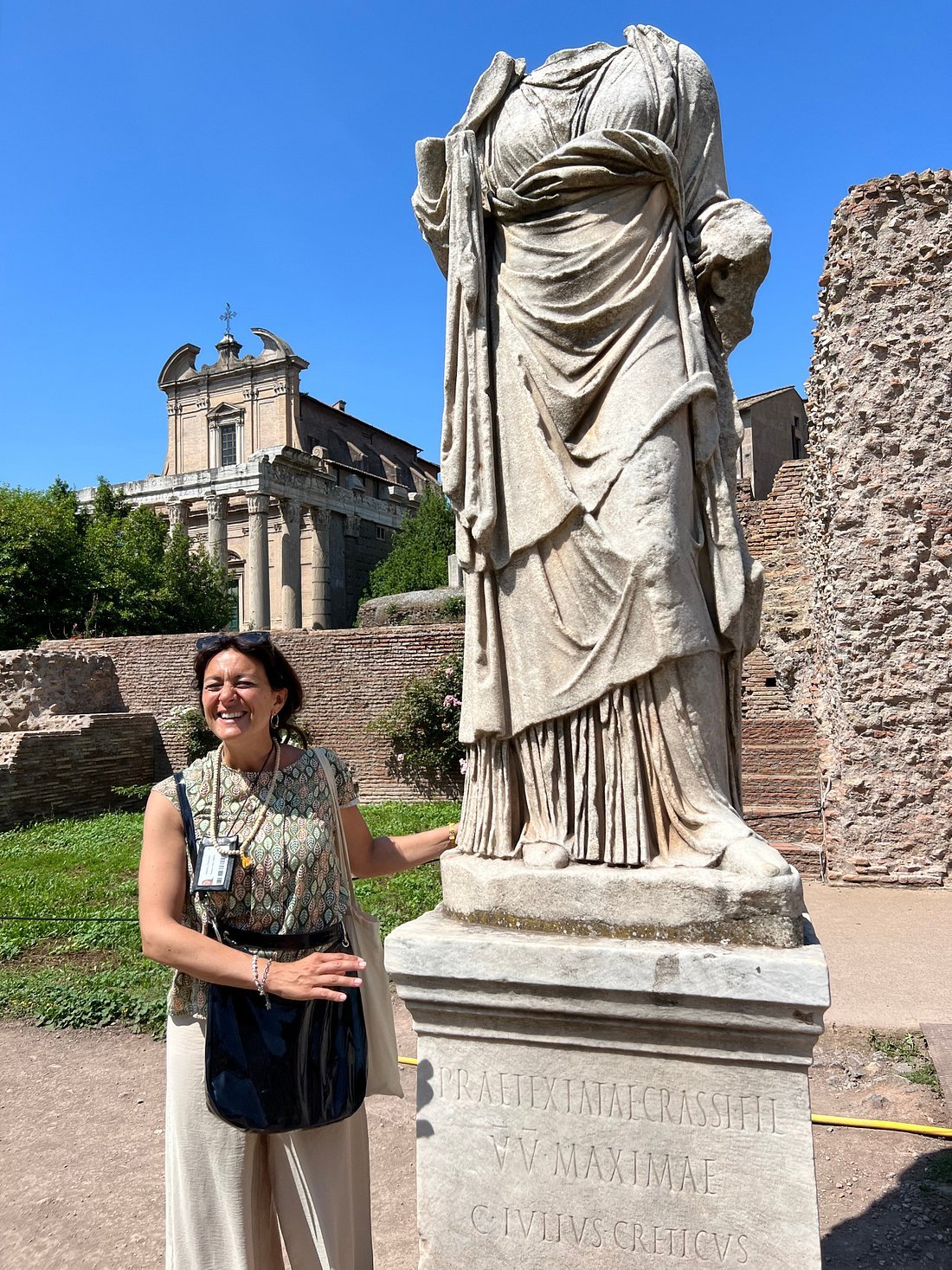

Getting from Rome to Siena
Siena is another one of Tuscany’s main attractions, and with ample reason. It’s a stunning medieval city with a gorgeous historic center and fabulous monuments. While you could visit Siena in a very fast-paced morning, you should give yourself the better part of a day to wander the city’s narrow streets and admire wonders like the Duomo di Siena, the Palazzo Pubblico, the Piazza del Campo, and the Basilica di San Domenico.
The city also has a host of fantastic restaurants and some excellent wine bars where you can sample the great Chianti Classicos and Super Tuscans produced in the Chianti region just beyond the city. All that and we haven’t even gotten started with the many attractions in the surrounding area!
Planning a visit to Siena is a great choice.
Rome to Siena by train
Unfortunately, getting to Siena from Rome is not super convenient. There’s no direct train, so if you want to travel by rail, you will first need to go to Florence and then change to another train for Siena.
As mentioned before, trains from Rome to Florence take about 1.5 hours. To then carry on to Siena, you will have to catch a Regionale or Regionale Veloce train (R or RV), which take from 1.5 hours to just under 2 hours. Trains between Florence and Siena start running at about 5:00 AM and continue on until 9:30 PM, typically with 2 trains each hour.
Bear in mind that some trains from Florence to Siena require a change in the city of Empoli. The travel time is barely any different from the direct trains, but check your ticket carefully before purchasing if you want to avoid having to make a change.
Assuming that you’re able to line your trains up well and can catch a train to Siena right after you get to Florence, your total travel time between Rome and Siena would be between 3 and 4 hours. The tickets from Rome to Florence will cost you from 15-50 euro, and the tickets from Florence to Siena will cost another 10 euro.
Rome to Siena by bus
If taking the train sounds more complicated than what you’re looking for, the bus could be a better option for getting to Siena from Rome. The journey takes 2.5 to 3 hours, so it’s slightly shorter than taking the train and it has the benefit of being a direct route with no need to make a change or transfer.
All buses to Siena leave from outside Rome’s Tiburtina train station and there are a number of different companies that run this route. FlixBus, ItaBus, and MarinoBus are the three most common options. All of them are fine, and which one you take will likely just depend on price and the available departures.
ItaBus doesn’t have the same schedule for every day of the week, so you should be sure to look for your exact travel date when checking their schedule. Generally, they have a few late morning departures and then one or two buses in the afternoon and another one or two in the evening.
Marino Bus, on the other hand, does have a fixed daily schedule, with a 5:35 AM bus and then another one at 3:00 PM.
FlixBus offers the most daily departures, with buses usually at 8:20 AM, 9:20 AM, 12:15 PM, 2:30 PM, 4:00 PM, 4:30 PM, 6:45 PM, and 9:45 Pm.
In all cases, a one-way bus ticket will cost you anywhere from 3 euro up to about 15. Marino Bus has a fixed rate of 15 euro, whereas FlixBus and ItaBus have frequently changing prices.
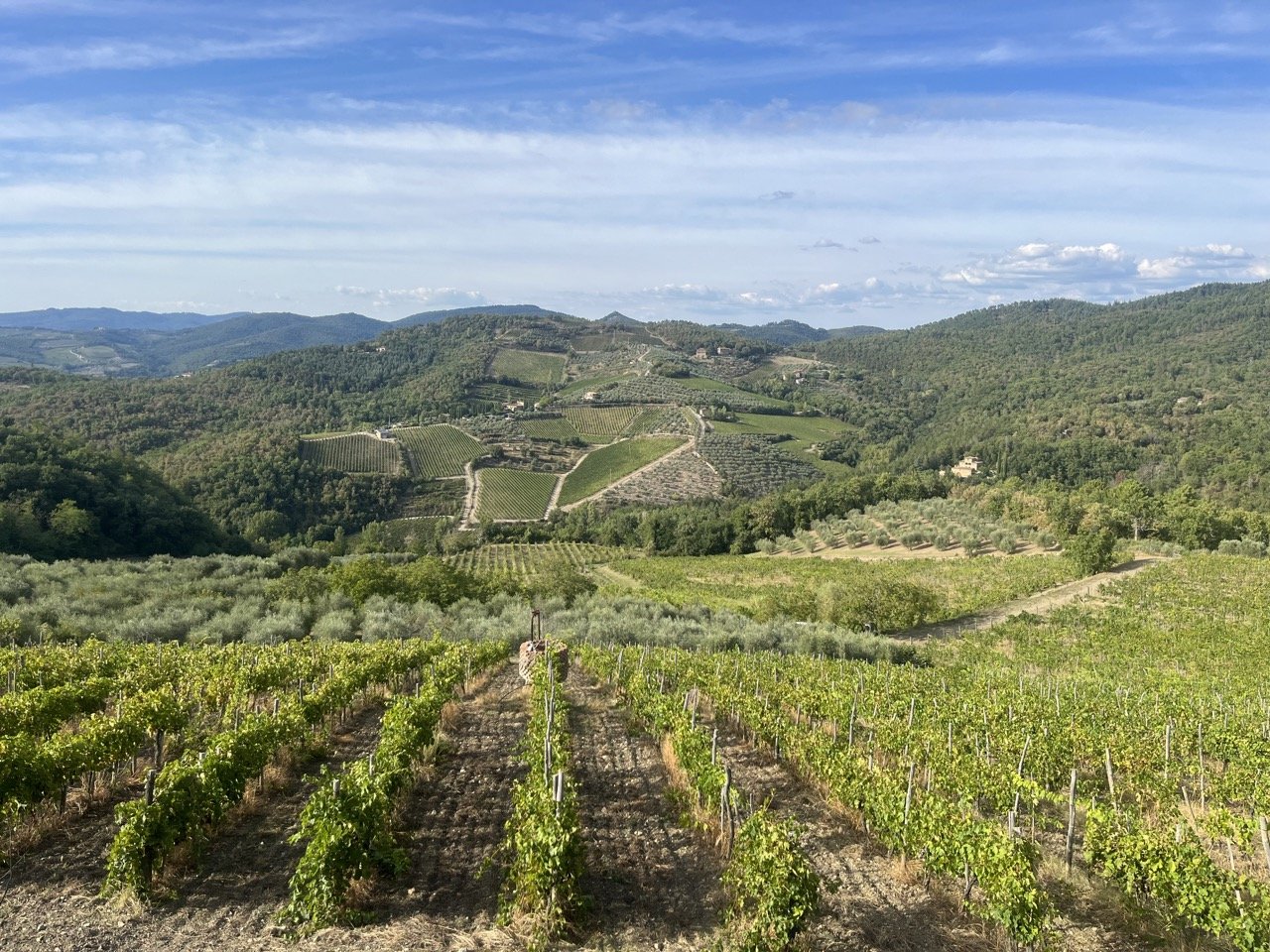
Getting from Rome to Cortona
If you’re looking for a taste of a smaller, charming Tuscan town, Cortona makes for a great place to visit from Rome. Tucked away in the Val di Chiana (Chiana Valley), near to the city of Arezzo, this lovely hilltop town is still guarded by its original Etruscan walls. The city center is also one of the only ones in Tuscany, and anywhere in Italy, whose layout is in the Etruscan and not Roman style.
The town offers spectacular views over the surrounding valley, reaching as far as Lake Trasimeno. For a little pop culture, Cortona was both the setting and inspiration of the famous novel “Under the Tuscan Sun.”
Sitting just a few miles from Montepulciano and Montalcino, you are also squarely in the heart of Tuscan wine country here. There are excellent wineries nearby, as well as very nice wine bars right in town.
This can be the perfect escape from the city, and a visit here will give you a real taste of small-town Tuscany.
Rome to Cortona by Train
Thankfully, getting to Cortona from Rome is actually pretty easy. Camucia-Cortona train station is one of the scheduled stops on the Rome to Florence Regionale Veloce train route, so there are fairly frequent daily departures (about one per hour). The journey to Cortona will take you about 3 hours and one-way tickets cost about 15 euro.
The only inconvenience is that the Cortona train station is not actually in the center of town. Instead, it’s about 5 km away, at the bottom of the hill that Cortona is perched atop. So, once you arrive at the train station, you’ll need to either catch a bus or grab a taxi to take you the remaining 10 to 15 minutes into town. Buses depart frequently, with a few every hour, so you shouldn’t be stuck waiting at the station for long.
The last train from Camucia-Cortona back to Rome leaves at 10:30 PM, so if you arrive in the town early enough in the day, you can really have a very full day here. You might even have time to get out to some of the nearby wineries!


Getting from Rome to Montepulciano
Even if you’re not a huge wine fan, there’s no way you haven’t heard of Montepulciano. The town’s delightful red wine, Vino Nobile di Montepulciano, is reason enough to make a day trip here. Montepulciano is a small town of about 14,000 in southern Tuscany. It’s a major center of wine production and also a pleasant hilltop town with much of its medieval core and Renaissance architecture still in tact.
While in town, make sure to visit the main square, called Piazza Grande, the Palazzo Comunale, the Duomo, the Chiesa di San Biagio, and go for a stroll down the town’s main drag, Via di Gracciano nel Corso.
A great way to organize a day trip here is to plan on a few hours visiting town, a great local lunch, and then an afternoon visit to a winery or two before hopping the train back to Rome.
Rome to Montepulciano by Train
While there’s no direct train from Rome to Montepulciano, getting here from the Eternal City isn’t too difficult.
From Rome’s Termini train station, there’s a daily 7:00 AM Regionale Veloce train to Chiusi-Chianciano Terme station in the town of Chiusi, which is where you’ll need to get off and make a transfer. From Chiusi, there are direct trains on to Montepulciano.
The train from Rome to Chiusi takes about 1 hour and 45 minutes, and the train from Chiusi to Montepulciano is only a 15 minute ride. Assuming you catch the 7:00 AM train from Rome, you should arrive to Chiusi-Chianciano Terme at about 8:45 AM. This is perfect timing as the train to Montepulciano should pass by 15 minutes later, at 9:00 AM. Once on the second train, it’s just a short 15 minutes to Montepulciano.
Should you miss the connecting train at Chiusi-Chianciano, you should be able to get a taxi to bring you to Montepulciano. This will of course cost you more, but the town is only about 10 miles away so the price shouldn’t be exorbitant.
If trying to catch a 7:00 AM train is too ambitious for you, there are also other departures throughout the day (starting in the late morning) from both of Rome’s train stations, Tiburtina and Termini. All of these trains also require you to transfer at Chiusi-Chianciano Terme, and the total transit time will depend on how well the arrival time of your train from Rome lines up with the connecting train to Montepulciano. Regardless, it shouldn’t take you more than 3 hours in total.
Once you’ve had your fill of exploring Montepulciano, you’ll have to get back to Rome, and your return journey will be exactly the same, only in reverse. There are trains leaving Montepulciano at 5:55 PM, 6:50 PM, 8:40 PM, and 9:30 PM. Each has a transfer in Chiusi-Chianciano Terme for the train going to Rome.
Getting from Rome to Pisa
Pisa is world famous for its leaning tower, which puts it squarely on the “must-see” list for many travelers. Realistically, many visitors to the city are somewhat disappointed upon arrival, when they find out that there isn’t much to see or do beyond snapping a quick photo at the tour.
With that in mind, there are many far more interesting places to visit in Tuscany, and taking such a long trip just for a few photos really isn’t worthwhile. Pisa is definitely not a day trip that we’d recommend.
However, if you’ve got your heart set on seeing the Leaning Tower of Pisa, here’s the best way to get there from Rome.
Rome to Pisa by Train
There are a few direct Frecciabianca and Frecciaargento trains each day, which go straight from Roma Termini to Pisa Centrale. These trains are, like the aforementioned high-speed Frecciarossa trains, fast trains from Italy’s national train service Trenitalia. They’re just not quite as fast as the Frecciarossa. The journey from Rome to Pisa takes about 3 hours and is certainly your easiest option, as it saves you from having to make a change. Tickets cost from 20 to 40 euro.
Whether this option makes sense will depend entirely on your timing. There are some very early morning departures from Rome, and then nothing until late morning. Unless you get an early start, you’ll be wasting a lot of your morning waiting for a train.
Your other option is to take a high-speed Frecciarossa train to Florence, and then catch another train from there direct to Pisa. While having to change trains makes things a little bit more complicated, as long as you check the schedules and make sure there’s a train scheduled for Pisa shortly after you arrive in Florence, your total travel time will still only be about 3 hours. And since there are 2-5 trains from Florence to Pisa every hour, it’s very unlikely that you’ll be waiting a long time no matter when you arrive.
The Frecciarossa trains to Florence leave far more frequently than the direct Rome-to-Pisa ones, so you have options all throughout the day. One-way tickets on the Frecciarossa will cost you from 30-60 euro. As always, prices are lower when you buy your tickets well in advance.
Frequently asked questions
How far is Tuscany from Rome?
Tuscany is a region (and a large one), not a town or city, so different parts of Tuscany are different distances from Rome. Rome is inside the region of Lazio while Florence is inside the region of Tuscany.
The Tuscan border is about 120 to 160 kilometers north of Rome, depending on where you reach it. By car, the closest Tuscan towns are about 1.5 hours from Rome. Florence, Tuscany’s capital, is 273 km (170 miles) north of Rome; about 3 hours by car and 1.5 by high-speed train.
Can you visit Tuscany on a day trip from Rome?
There are a number of Tuscan towns and cities that you can visit as a day trip from Rome. The easiest city to visit is Florence because it’s connected with Rome via high-speed trains that depart multiple times every hour, from early in the morning until late in the evening.
Florence is the only stop on the high-speed train though, so if you want to visit other towns you need to use slower Regionale trains that make more stops. While you can visit Tuscan towns like Cortona or Arezzo on a day trip via these slower trains, travel times can take up to 3 hours (each way), so a day trip out to them makes for a very long day.
Other places in Tuscany, like Montepulciano, San Gimignano, or Siena are very doable as a day trip if you have a car. Even so, the drive will take a few hours each way, so it’s not a quick trip. If you don’t have a car and plan on taking the train, getting to most towns in Tuscany require either making a change of trains or taking a combination of train and bus or train and taxi. Most of them will also take 3 hours to get to, so a day trip would be a very long day.
Is a day trip from Rome to Tuscany worth it?
Tuscany is a beautiful part of Italy and you could easily spend a week exploring it. But if you don’t have the time for a longer visit to Tuscany and can only visit as a day trip, then yes, it’s definitely worth it.
However, if you’ll be traveling by train we’d recommend just visiting Florence as the city has enough to keep you busy for an entire day (and much longer) and it’s the fastest and easiest journey from Rome. Getting to other parts of Tuscany by public transport is either too long or too much of a hassle to be worth it as a day trip.
Is Italo or Trenitalia better?
Italo is a private train company that exclusively runs high-speed trains on Italy’s most transited routes. Trenitalia is owned by the state and runs high-speed trains as well as slower InterCity, Regionale Veloce, and Regionale trains. Trenitalia’s high-speed trains are called “Frecciarossa”.
When comparing the Frecciarossa trains to the Italo trains, we don’t think there’s really any difference. They all have WiFi, comfortable seats, bathrooms in every carriage, and plenty of luggage storage. We’d just recommend picking whichever train is cheaper and better fits with your schedule.
How much do high-speed train tickets cost?
Ticket prices for high-speed trains in Italy change depending on when you purchase them. If you buy tickets close to your travel dates, they almost always cost more - sometimes doubling or tripling in price.
If you purchase your train tickets in advance - at least one month before your travel date - the high-speed train from Rome to Florence can cost as little as 12.90 euros. On average, figure that tickets cost about 25 euros. Last-minute prices can rise to 50 euros or more.
Is the train ride from Rome to Tuscany scenic?
Parts of the journey are scenic, though not exceedingly so. Most of the time you’ll just be passing through flat agricultural fields that are rather nondescript. Also, the high-speed train goes quite fast, so it really doesn’t lend itself well to watching the scenery.



See Tuscany with Stefano!












